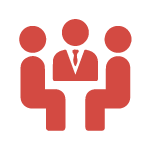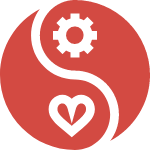Let’s talk about solving the Food Sensitivity Test Puzzle. An estimated 30 percent of Americans experience some kind of food sensitivity during their lifetime. The most common symptoms include gastrointestinal upset, skin rashes or respiratory issues. You can also experience fatigue, headache, mood swings and even migraine. Let’s now learn how to uncover and identify a food sensitivity.
 Uncovering A Food Sensitivity
Uncovering A Food Sensitivity
It is often difficult to pinpoint “the offending food”. Symptoms can be non specific like bloating, acid reflux, headaches, nausea, runny nose, sinus issues and/or fatigue.
I like the DIY 30-day elimination diets where you remove the foods most commonly associated with food sensitivities. Then you reintroduce them one at a time while monitoring for symptoms.
The Advanced Food Sensitivity IgG Test
There is a blood test that measures the reaction of the immunoglobulin G (IgG) antibodies in your blood to a variety of foods. You can find out more about that HERE.
I have created a very convenient link for you to The Advanced Food Sensitivity IgG food sensitivity panel measures allergic IgG reactions to 90+allergens. The Food Safe Allergy test comes conveniently packaged as a kit. It requires a “finger stick” blood spot to be collected and shipped directly to the laboratory in a pre-paid envelope. All necessary components for the “finger-stick” are included in the kit with a complete set of instructions for easy collection.
The DIY Elimination Plan
An elimination diet is divided into an elimination phase and a reintroduction phase. For 30 days you stop eating any foods you suspect you may be sensitive to as well as known “trigger foods” such a gluten. dairy, nightshade vegetables and processed foods.
After 30 days it’s time to reintroduce foods one at a time over two to three days.
The Power of Probiotics
In my PODCAST I talk about the importance of bacterial diversity. A lack of diversity in the gut has been linked to the development of food sensitivities. Certain species of bacteria assist in the breakdown of gluten – and lack of these may predispose you to gluten sensitivity.
Taking a multi strain probiotic every day can contribute to a robust and diverse microbiome. CLICK HERE for the one I take and recommend.
If you want to learn more about the Microbiome and “GUT MATTERS” CLICK HERE for my ebook Gut Matters: 4 Ways to Optimize Your Digestion to Boost Your ‘Second Brain’ and Improve Your Mood
Other Blogs on this Topic
Finally FDA Defines Gluten Free
Are Your Hidden Food Allergies Making you Sick (and fat)?
The information is not designed to replace or take the place of any form of medical or professional advice; and is not meant to replace the need for independent medical or other professional advice or services, as may be required.





























